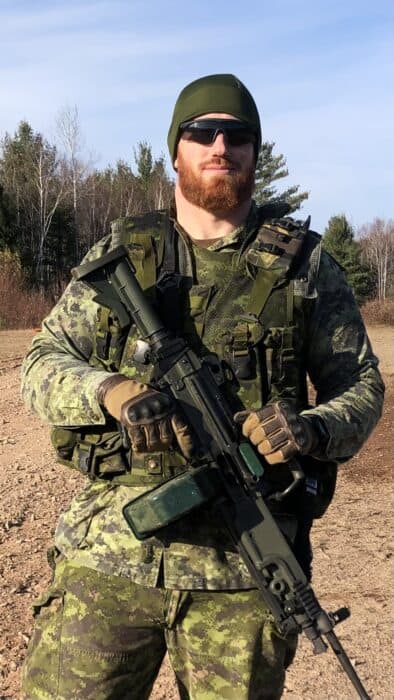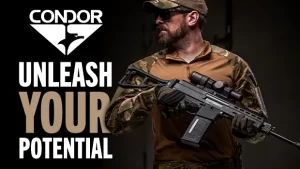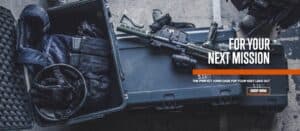TacticalGear4Life is supported by its wonderful audience. When you make a purchase through our links below, we may earn an affiliate commission.
I don’t know if you’re like me, but for as long as I have used tactical gear in both my professional and personal life I have known of Cordura nylon, but I’ve never really thought about what it is or why pretty much %99.999 of all tactical gear uses Cordura nylon some where in its construction.
Well, I’m thinking about it now and thought you might be interested in it as well. Knowledge is power and the greater knowledge you have of your gear and its limits the better you’re able to function.
So…
WHAT IS CORDURA NYLON?
Cordura nylon is……NYLON! (BOOM! I bet your head exploded with that truth bomb)
Cordura nylon is just nylon produced under the brand name Cordura.

CORDURA NYLONS LONG TACTICAL HISTORY
Cordura nylon was created by E.I. du Pont de Nemours and Company (DuPont) in 1928.
DuPont a citizen of France, initially founded the company in 1802. He started the company near Wilmington, Delaware where the company unknowingly first developed its ties to what would one day be known as the tactical gear industry.

DuPot, began, as a manufacturer of gunpowder. He noticed the gunpowder industry in North America was lagging behind that of Europe and decided to fill the profitable void.
The company grew quickly, and by the mid-19th century had become the largest supplier of gunpowder to the United States military, supplying at least half of all the powder used by the Union Army during the American Civil War. Following the Civil War DuPont expanded into manufacturing Dynamite and smokeless powder, while subsequently developing the Improved Military Rifle (IMR) line of smokeless powders.

In 1928 a rubber company approached DuPont with the challenge to produce high quality rayon both stronger and more durable in order to be used in their ties. DuPont’s chemical and mechanical engineers as well as their scientist got hard to work.
Out of this incredible cooperation of engineers and scientists came what was called “Cordura“. The new and improved super form of rayon which was as strong as some steels and yet extremely flexible.
Come WW2, Cordura went from being primarily used for tires on just civilian vehicles to being used largely for tires on military vehicles.
This is where we can begin to see the shift from what was once known as Cordura rayon to what it would become Cordura nylon…
During WW2 DuPont started using newer forms of high tenacity nylon in parachutes, powder bags, and…..body armor.

This high tenacity nylon first appeared in body armor in the form of flak jackets issued to Britains Royal Airforce, followed by American airmen, and then American soldiers in general. These nylon flack jackets continued to be used in the Korean and Vietnam wars.
It was through this time period and use in these wars that this new stronger tougher nylon started to be termed “Ballistic Nylon“.
As strong, tough, and abrasion resistant as this nylon was it wasn’t actually super effective at stopping shrapnel and could not stop actual bullets. DuPont developed Kevlar in the 1960’s and it replaced nylon as the main source of protection in body amor by the 1970’s.
However, these new forms of extremely strong and tough nylon weren’t going anywhere. Although not bullet proof, applications else where would be endless.

In 1966 Cordura took on the form we see today.
DuPont wanting the Cordura name to represent only the strongest and toughest fabric, in 1966, simply switched the name Cordura from the original rayon, to this new modern tougher form of nylon.
Cordura Nylon was born.
In the late 1970’s researchers developed a way to dye Cordura nylon. This ability to have Cordura in more appealing colours is what opened it up to the public and commercial world. First being used in luggage, then day packs, and eventually progressing to clothing.
It is this heritage and this quality that has led Cordura nylon to be the number one material used in ALL Tactical Gear today.
WHAT IS THE DIFFERENCE BETWEEN REGULAR NYLON & CORDURA NYLON?
NOTHING. Cordura nylon is no different than other nylons.
As I disgust above, Cordura is simply the brand name made by DuPont and is in all our tactical gear thanks to its incredible and unique heritage! Also because DuPont invented nylon, that’s a big one.
So, there is no actual difference between Cordura nylon and nylon produced by any of the worlds other top ten leading nylon producers.
HOW STRONG IS CORDUA NYLON REALLY?
We know Cordura Nylon is extremely strong, with an absurdly high tensile strength but, how strong is it really?
The tensile strength is measured in what’s called a fabrics “breaking strength“. Fabrics are pulled in two different directions, one at a time. First in the direction of its warp fibers and then in the direction of its fill or weft fibers. The amount of force applied to the fibers is then measured in pounds per square inch or Newtons.
Those are different terms I know, let me give maybe an easy example to help you understand.

Think of cutting a stump from a tree with an axe. You can hit the stump in line with the grains of wood or across the grains of wood. Hitting the stump with the grains of wood is like pulling the weft fibers, its weaker in that direction.
Pulling the warp fibers is like hitting the wood across the woods grains, it is much stronger to pull the warp fibers.
SO….how strong is say 1050D Cordura Nylon?
The tensile strength or break strength of Cordura Nylon is:
- 1050D Cordura Nylon: Warp – 12,400 PSI
Tensile strength of other materials:
- Kevlar: Warp – 525,000 PSI
- Aluminum: 45,000 PSI
- Steel – 70,000 PSI
Fabric is not just measured in tensile strength, it’s also measured in abrasion resistance. How much rough rubbing can a material stand before it starts to show wear and tear.
Fabric samples are mounted flat and rubbed in a figure eight like motion using a piece of worsted wool cloth as the abradant. The number of cycles that the fabric can endure before fabric shows objectionable change in appearance is counted. The number of cycles determines a fabrics abrasion rating.
- 1050D Cordura Nylon: 25,600+ cycles
WHAT DOES DENIER MEAN?
I didn’t know what denier meant for the longest time, so if you are like I was, let me inform you.
Denier is used to determine the of thickness of the individual fibres in a fabric.

Now, it is a little strange, but stick with me. It measures the thickness of the fabric, by the weight of the fabric in grams per 9000 meters of fibers.
So 1050D nylon, (like what the 5.11 Rush72 is made of), would weigh 1050 grams for 9000 meters. In turn, 500D nylon (like what the Mystery Ranch 2 Day Assault Pack is made of) would weigh 500 grams per 9000 meters of fibers.
Now…many of the other blogs I have seen out there, have stated that Denier is not an indicator of strength and It may not be. However, there is a direct correlation when it comes to nylon between the Denier measurement and strength.
Nylon itself is very strong, but the higher denier a nylon is, the stronger it is. 500D nylon is strong but not as strong as 1050D nylon.
WHAT ARE THE MOST COMMON DENIER LEVELS IN TACTICAL GEAR?
All though nylons full range of denier extends all the way from 15D nylon all the way up to 1680D nylon, Cordura Nylon isn’t quite that extensive. Cordura Nylon is produced ranging from as low as 100D nylon up to 1050D nylon.
The Cordura Nylon in tactical gear most commonly ranges from 500D nylon – 1050D nylon.
Cordura Nylon is produced in:
- 500D Nylon (Backpack, clothes)
- 600D Nylon (Backpack, clothes)
- 1000D Nylon (Backpacks)
- 1050D Nylon (Backpacks, sheaths, Plate Carriers)
WHAT IS BALLISTIC NYLON?
As I stated above in the history of Cordura Nylon, Ballistic nylon is just a term given to the nylon used to make flack jackets back in WW2.
Today however, if you are to say ballistic nylon, people simply understand it mean extremely strong nylon fabric.
Ballistic nylon refers to the absolute strongest forms of nylon, the nylon that has the highest Denier. The two forms of nylon generally referred to as ballistic nylon are:
- 1050D Nylon
- 1680D Nylon
Common misconception: Ballistic nylon is it own thing separate from Cordura Nylon. A common question I see online is “Whats stronger, ballistic nylon or Cordura Nylon?”
Reality: Ballistic nylon refers to a strength of nylon, where as Cordura is a brand of nylon. They are two different things completely. So, at its base this question doesn’t actually even make sense. It’s like asking “What’s better, denim jeans or Levi jeans?”, denim is a material and Levi’s a brand. The question fundamentally is flawed.
Cordura as a brand, produces its own line of tough ballistic nylon.
CONCLUSION
DuPont, the creator and inventor of Cordura Nylon has from the very beginning had a strong connection with the military and tactical community, so it was fitting that Cordura Nylon came from them.

Cordura Nylon was a break through material when it was first invented. Even today its patent holds the highest value. Its super polymer strength and durability instantly made it not only relevant to the American military, but sought after.
In the end, even though it proved not to be fit to stop bullets, it did prove to be so effective that too this day it is involved in all gear military and tactical. Even to the point where our modern day plate carriers are made entirely of Cordura Nylon.
Tactical backpacks, gun bags, belts, tactical vest, shirts, pants, boots, knife sheathes, and more are all made from Cordura Nylon.
The very name is a symbol of durability, representing the epitome of strength in the eyes of many.
The First Line of Defence: The Infantry Soldier
Susannah Rayfield, European Brand Manager for INVISTA’s CORDURA® brand, discusses developments in infantry soldier clothing from 1930’s to present day. CHECK OUT THIS AWESOME READ
TacticalGear4Life is reader-supported. Clicking on provided links and making a purchase may earn me a small commission at NO extra cost to you.



















